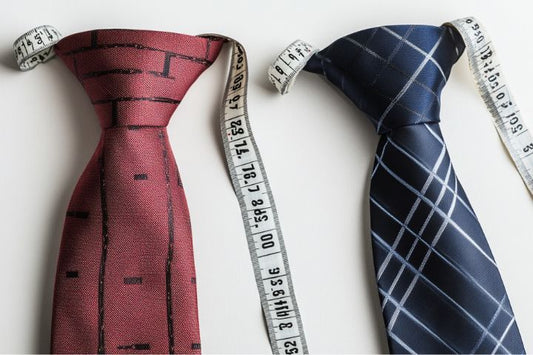Washing socks is an essential part of laundry duties, often requiring a careful approach to maintain their quality and longevity. They come into close contact with feet for extended periods and absorb not just sweat but also pick up dirt and odours. Therefore, proper cleaning is crucial to ensure they remain hygienic and comfortable for wear. It involves general steps like using the right water temperature, detergent, and washing cycle, which can differ depending on the material and colour of the socks.
When preparing to wash socks, including athletic compression socks, novelty dress socks, and delicate wool blend socks, it's important to sort them by colour and fabric type to prevent any dye transfer or damage to delicate materials. Turning socks inside out before washing can help in cleaning the fibres more effectively by exposing the most soiled part of the socks to water and detergent directly. Additionally, cotton crew socks, sports performance socks, and patterned dress socks should be washed in cold water using a gentle cycle to reduce the risk of shrinkage and to preserve their elastic properties.
Particular attention should be given to socks with heavier soiling or stains. Pre-treating such areas by soaking or rinsing before the main wash can significantly enhance the cleaning results. Whether choosing to machine wash or hand wash, one should always refer to the care instructions provided on the sock label, as these offer valuable insights into maintaining the quality of different materials such as cotton, wool, or synthetics.
Preparation for Washing
Proper preparation can improve the longevity and cleanliness of socks. The reader should focus on sorting, pre-treating, and deciding on the washing orientation of socks for optimal results.

Sorting Socks
Socks should be organised into pairs and sorted by colour and material. Whites should be separated from colours to prevent dye transfer. Delicate fabrics require special attention, and thicker materials may need a longer wash cycle.
- Whites
- Colours
- Delicates
- Thicker materials
Pre-Treating Stains
For stubborn stains, pre-treat with a suitable stain remover before washing. Apply the remover to the affected area, following the product’s instructions. This step is crucial for maintaining the appearance of socks.
- Apply stain remover
- Let sit as per product instructions
Should Socks be Washed Inside Out?
Socks ought to be turned inside out before washing to minimise wear and tear. This preserves the fabric's exterior and ensures a thorough clean, especially for areas like heels and toes that have more contact with skin and sweat.
- Turn socks inside out
- Wash to protect fabric exterior
Selecting the Proper Washing Cycle
The correct washing cycle ensures that socks are cleaned effectively without damage. The cycle chosen should reflect the material and soil level of the socks.
Temperature Settings
Socks require careful attention to temperature to maintain their fabric integrity. Cold water, typically around 30°C, is ideal for most socks as it prevents colours from bleeding and reduces the risk of shrinkage. It’s especially important for delicate materials such as wool or those with high-performance fibres. For heavily soiled socks, a warm setting may be necessary to remove stubborn dirt, but one must always check the garment's care label first.
Detergent Choices
Choosing the right detergent is pivotal for sock longevity. A mild detergent suits most sock fabrics and helps preserve their colours and textures. Usage of bleach or fabric softeners is discouraged because they can degrade the material, especially in more delicate socks. For synthetic materials with moisture-wicking properties, ensure the detergent is suitable for synthetic fibres to maintain functionality post-wash.
Washing Socks by Hand
When washing socks by hand, one should ensure the process involves correct soaking, thorough rinsing, and proper drying to maintain the quality of the socks.
Soaking
- Temperature: Cold to lukewarm water is suitable for most sock materials.
- Duration: Soaking should last between 3-5 minutes for optimal fibre care.
- Detergent: Use a small squirt of liquid detergent; for white socks, a touch of bleach can be added.
Rinsing
- Water: Fresh cold water is ideal for rinsing out soap thoroughly.
- Technique: Gently squeeze the socks without twisting, ensuring no detergent remains.
Drying
- Method: Press socks between two towels to remove excess water instead of wringing them out.
- Location: Lay socks flat in a shaded area with enough air circulation for drying; avoid direct sunlight and high heat.
Using a Washing Machine
The section provides a step-by-step guide for effectively cleaning socks in a washing machine, from sorting to the proper cycle selection.
Loading the Machine
One should organise their socks into pairs before placing them in the washing machine. This helps prevent the mystery of lost socks. Socks should be turned inside-out to ensure they are thoroughly cleaned, especially in areas like the toes and heels.
Cycle Types
For washing socks, it's advisable to set the washing machine to a gentle cycle using cold water (around 30°C) and a mild detergent. This helps in preserving the fabric's integrity and prevents shrinkage or fading.
Unloading
Once the cycle is completed, socks need to be promptly removed from the machine to avoid odour formation. Each pair should be turned right-side out before they are hung out to dry, preferably in a well-ventilated area or outside to maintain their fresh scent and texture.

Differences between Sock Materials
Different sock materials require specific laundry care to maintain their quality and longevity. The following subsections outline the appropriate washing techniques for wool, cotton, and polyester socks.
How to Wash Wool Socks
Wool socks are valued for their ability to keep feet warm and dry. They should be washed with care to avoid shrinkage and damage. It's recommended to hand wash wool socks in cold water using a detergent designed for wool fabrics. For machine washing, one should select a wool cycle and use a gentle spin. Always air dry wool socks to maintain their shape and texture.
How to Wash Cotton Socks
Cotton socks are known for their comfort and breathability. They can generally be machine washed on a warm setting with like colours to keep them from fading. When washing cotton socks, one may use a regular detergent. Ensuring the socks are turned right side out before washing can help in maintaining their colour and preventing piling. Cotton socks can be air-dried or tumble dried on a low setting.
How to Wash Polyester Socks
Polyester socks offer durability and moisture-wicking properties. To wash polyester socks, use a cold or warm water setting and a detergent that is suitable for synthetic fabrics. Turning polyester socks inside out before washing can minimise pilling. For drying, they should be air-dried or tumble dried on a low heat setting to protect their elasticity and prevent melting or fabric damage.
How to Clean White Socks
To maintain the brightness of white socks, one should embrace a methodical approach. Here's a step-by-step guide:
Preparation: Before washing, socks should be checked for any stains. For spot treatment, one might opt for pre-treatment products or natural remedies.
Washing Steps:
- Separation: Firstly, segregate white socks from coloured laundry to prevent colour transfer.
-
Soaking: Soak the socks in warm water mixed with:
- 60 ml of chlorine bleach or
- 30-45 grams of oxygen-based bleach powder or
- 250 ml of hydrogen peroxide or
- 250 ml of baking soda
- Agitation: Gently swirl the socks in the solution to loosen dirt.
- Washing: Then, machine wash the socks with a heavy-duty laundry detergent at the temperature indicated on the sock's care label.
- Additional Care: If desired, add 250 ml of baking soda alongside the detergent during the wash cycle. During the rinse cycle, add 250 ml of white vinegar for softening.
Be mindful to use the appropriate amount of bleach and other products to prevent sock fabric damage. Avoid twisting or wringing the socks as it may cause them to stretch or lose shape.
Drying: Post-wash, socks should be dried as per their care instructions. Line-drying is preferable to maintain the fabric integrity, but if tumble drying is necessary, one should use a low heat setting.
Adhering to these steps will help ensure that white socks keep their brightness and quality for an extended period.
Now that you know how to wash socks, check our guide on How To Fold Socks.





